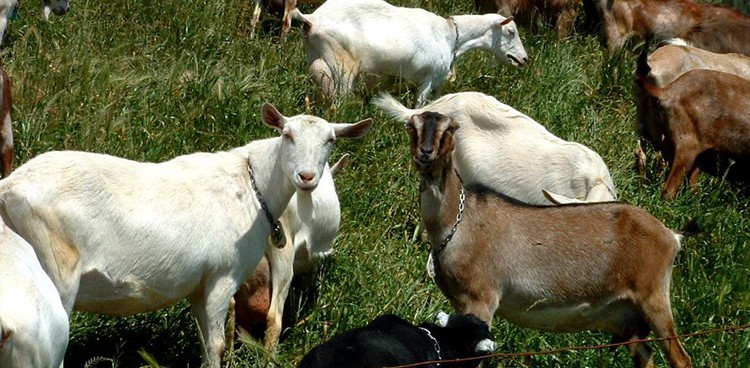
In a country with a strong diversity of delicious curds, labeling those brightly colored processed squares the all-encompassing “American” has always felt off-putting. So in my blog series, Pure Unprocessed American, I aim to detail what makes up the wide spread of real American cheeses, looking into the practical history of cheese in the States, reporting on official state cheeses and notable cheesemongers, and how different environments, from the Rockies to the Redwoods, affect the milk and the means for making cheese. Missed my introductory post? Check it out here!
California is known for everything from the lights-camera-action of Hollywood to the ancient and awe-inspiring redwood forests to the sweeping mountainscapes of the Sierra Nevada. This diversity of terroir provides a range of potential pastures for dairy animals to munch on and flavors to pass on to the cheese made from their milk. The climate itself is so great for cows and goats that California is the biggest producer of milk in the United States. These days West Coast goats and goat cheese reign supreme thanks to Laura Chenel, the goat queen. But that livestock wasn’t always there, and neither was cheese.
Spanish missionaries introduced Catholicism, cows, and cheesemaking to the Golden State in the 1700s. It wasn’t until the Gold Rush that cheese production really boomed: while pioneers would go out sifting through rocks and dirt, remaining family members would spend time with the livestock to make products like butter and cheese. Post–World War II industrialization had a huge effect on the food industry, and factory-made products quickly became seen as higher tech and higher quality. This is part of what made Kraft singles such a hot and exciting item in the home, and restaurants were more and more likely to cook food with frozen ingredients.

Photo Credit: “Chez Panisse” by ulterior epicure | CC BY-NC-ND 2.0
This changed in the 1970s when Alice Waters, at the time just a budding restaurateur and fresh food enthusiast, opened Chez Panisse in Berkeley and created a demand for local ingredients. She put an emphasis on working with organic farmers in her area and essentially catalyzed the artisan food movement. Laura Chenel, with a herd of goats and a couple thousand dollars, collaborated closely with Waters and began a goat cheese business that would both create a whole new demand for American chèvre and make her a millionaire.
Laura Chenel started with a love and dedication to animals. She tried her hand at animal husbandry in Northern California’s Sonoma Valley and soon found she had a lot of excess goat’s milk. So, Chenel decided to do something with it. She began experimenting to try and find the best technique to turn that milk into cheese. This prompted a journey to France, where she studied the techniques of four chèvre producers over the span of three months. Chenel combined that knowledge into a self-crafted recipe for creating a creamy, cloud-textured, tangy dream cheese—the kind that had been rarely seen and eaten stateside. Chenel had been selling her chèvre to small restaurants, but only after the 1981 partnership with Waters did everything really take off. The simple, revolutionary mesclun chèvre salad at Chez Panisse turned the cheese into a widespread menu item throughout California and then across the country. The fifty pounds of cheese a day for Waters’s restaurant turned into two million pounds a year over two decades. It was fresh, it was new, and it helped bring out more and more opportunities for other kinds of fresh and pure American cheeses.

Photo courtesy The Kitchn
The sad irony here, of course, is it no longer remains as “American” as it once was. After building a cheese empire, Chenel sold off her company and name brand to the Rians Group—a French company with an emphasis on quality cheese and artisan techniques. But it’s hard to blame her—Chenel was looking for a more relaxed life after maintaining her business for over twenty years. While this trend of European companies buying American cheese businesses has been building in recent years, the cheese is still made here in the States.
No matter who owns it, California chèvre will always be the American classic we continue to love, eat, and fondly remember.
Feature Photo Credit: Laura Chenel



